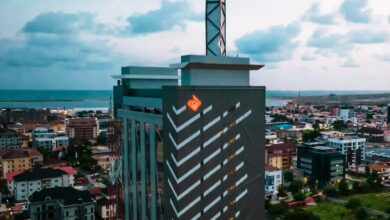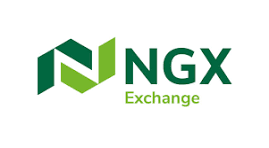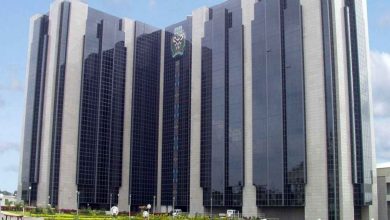
Oando PLC, a leading integrated energy group in Africa, is navigating a complex financial landscape. Despite reporting impressive revenue growth and strategic expansions, the company’s financial performance raises concerns about its stability and future prospects.
Oando’s revenue has shown remarkable growth, with a 44% year-on-year increase to N4.1 trillion in 2024, driven primarily by its upstream operations and strategic acquisitions. The company’s gross profit margin has also improved significantly, with a 172% surge in gross profit to N85 billion in Q1 2025. However, the company’s net finance costs and high operating expenses continue to pose challenges.
Oando PLC’s financial and operational highlights for the first half of 2025 reveal a mixed performance. The company reported a 63% increase in production volumes, driven by the successful consolidation of Nigerian Agip Oil Company assets, improved security, and infrastructure upgrades. However, revenue declined 15% year-on-year to ₦1.72 trillion, reflecting weaker realized prices and reduced trading activity.
This decline in revenue was accompanied by a 28% decrease in gross profit to ₦59 billion, largely due to the topline contraction and changing segment mix. Nevertheless, the company’s upstream performance was robust, with average daily production rising to 37,012 barrels of oil equivalent per day, up from 22,710 boepd in H1 2024. Crude oil volumes increased 77% to 10,479 barrels per day, while gas production grew 54% to 25,399 boepd.
Furthermore, Oando’s trading segment executed 14 crude oil cargos totaling 12.9 million barrels, up from 10 cargos in H1 2024. The company also made significant strides in clean energy initiatives, recording 113,864 electric vehicle rides and progressing on its solar PV module assembly plant and PET recycling projects .
The company’s strategic expansions, including its entry into Angola’s Kwanza Basin and the acquisition of Nigerian Agip Oil Company (NAOC), have contributed to its revenue growth. Oando’s upstream production has also increased, with average daily production rising by 72% year-on-year to 37,595 boepd in Q1 2025.
Despite its revenue growth, Oando’s financial position remains precarious. The company’s total liabilities exceeded its total assets by N240 million as of March 2025, raising concerns about its solvency. Additionally, the company’s debt-to-equity ratio and liquidity position require close monitoring.
Oando’s future prospects depend on its ability to manage its finances effectively, optimize its operations, and capitalize on growth opportunities. The company’s target to produce 100,000 barrels of oil per day by 2029 is ambitious, but achievable with careful planning and execution.
With a strong presence in the energy sector, Oando has the potential to regain stability and achieve long-term growth. However, the company must address its financial challenges and optimize its operations to ensure a sustainable future.
Oando PLC’s financial performance suggests that the company is facing some challenges, particularly with regards to its liquidity and debt management. The company’s receivable turnover ratio is 2.58 times, indicating that it collects its outstanding receivables approximately 2.58 times in a year. The days sales outstanding (DSO) is around 141 days, which means it takes the company about 141 days to collect its outstanding receivables.
The payable turnover ratio is 0.65 times, indicating that Oando PLC pays its outstanding payables approximately 0.65 times in a year. The days payable outstanding (DPO) is around 561 days, which means it takes the company about 561 days to pay its outstanding payables. This could be beneficial for the company’s cash flow, but it may also indicate that the company is having trouble paying its suppliers.
The inventory turnover ratio is 34.3 times, indicating that Oando PLC sells and replaces its inventory approximately 34.3 times in a year. The days inventory outstanding (DIO) is around 11 days, which means it takes the company about 11 days to sell its inventory. This suggests that the company is managing its inventory effectively.
The cash conversion cycle is -409 days, which means that Oando PLC is able to sell its inventory and collect its receivables before paying its suppliers. This is a positive sign for the company’s cash flow.
However, the current ratio is 0.24, which means that Oando PLC’s current assets are not sufficient to cover its current liabilities. This could be a concern for the company’s liquidity and ability to meet its short-term obligations.
The total debt of Oando PLC is approximately N3.19 trillion, which is a significant amount. The company’s ability to service this debt will depend on its cash flow and profitability. Overall, Oando PLC’s financial performance is a mixed bag, with both positive and negative trends. The company needs to focus on managing its receivables and payables more effectively, as well as reducing its debt burden to improve its financial performance.
Looking ahead, Oando’s management is focused on accelerating upstream monetization, strengthening trading performance, and executing capital restructuring initiatives to restore balance sheet flexibility. With a clear execution roadmap, the company remains committed to delivering sustained value to its shareholders. Key upcoming milestones include the completion of the first tranche of the distribution process on or before August 8, 2025, and the Annual General Meeting and Extraordinary General Meeting scheduled for August 11, 2025 ¹.




